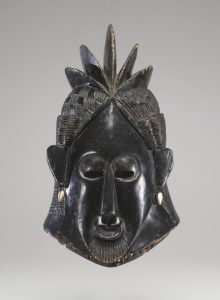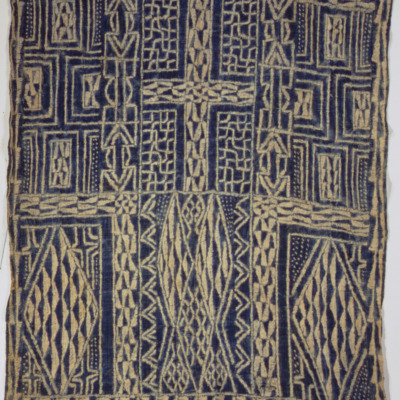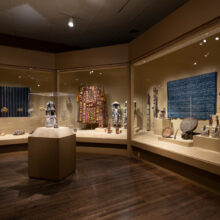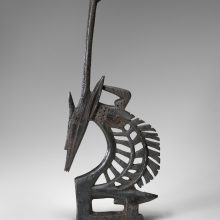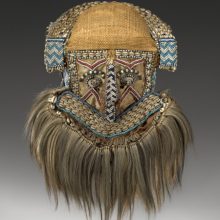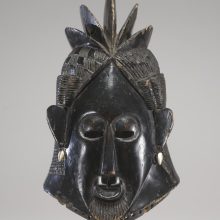The Senufo [seh-noo-fo] people are mostly farmers and skilled artisans who live in the countries of Mali, Burkina Faso, and Cote d’Ivoire. This statue symbolizes Senufo beliefs about ancestry and community. The bird is known as “mother of the poro child,” associating it with the elders or “mothers” who act as guardians.
This statue symbolizes Senufo beliefs regarding ancestry and community. According to myth, the bird and four other primordial animals—the snake, the turtle, the crocodile, and the chameleon—were present with the first man and woman. Sometimes the bird itself is called “the first ancestor.” Two young birds perched on its winglike flanks introduce the theme of successive generations.
The animal represented in this statue is identified as a hornbill. Generally one male and one female hornbill will remain together as a monogamous couple and work in tandem to create a safe nesting site to lay their eggs. The nesting site is usually a hole in a tree or rocks. About a week before incubation, the mother hornbill will begin to build a wall of mud around the hole, leaving just enough space to enter. Once she is in, the father hornbill will finish packing the hole, leaving just enough space to pass food to her and the chicks. When the chicks and female are too big to stay in the nest, they break out. This nesting habit is a metaphor for rebirth or regeneration, which is well suited to the purpose of this mask and the poro society. The young men who mount these heavy statues on top of their heads are proud for successfully making it through the poro society and are ready to show off their strength to the community.
Discuss the function of this object. Can you think of any similar traditions you have in your family or community?
